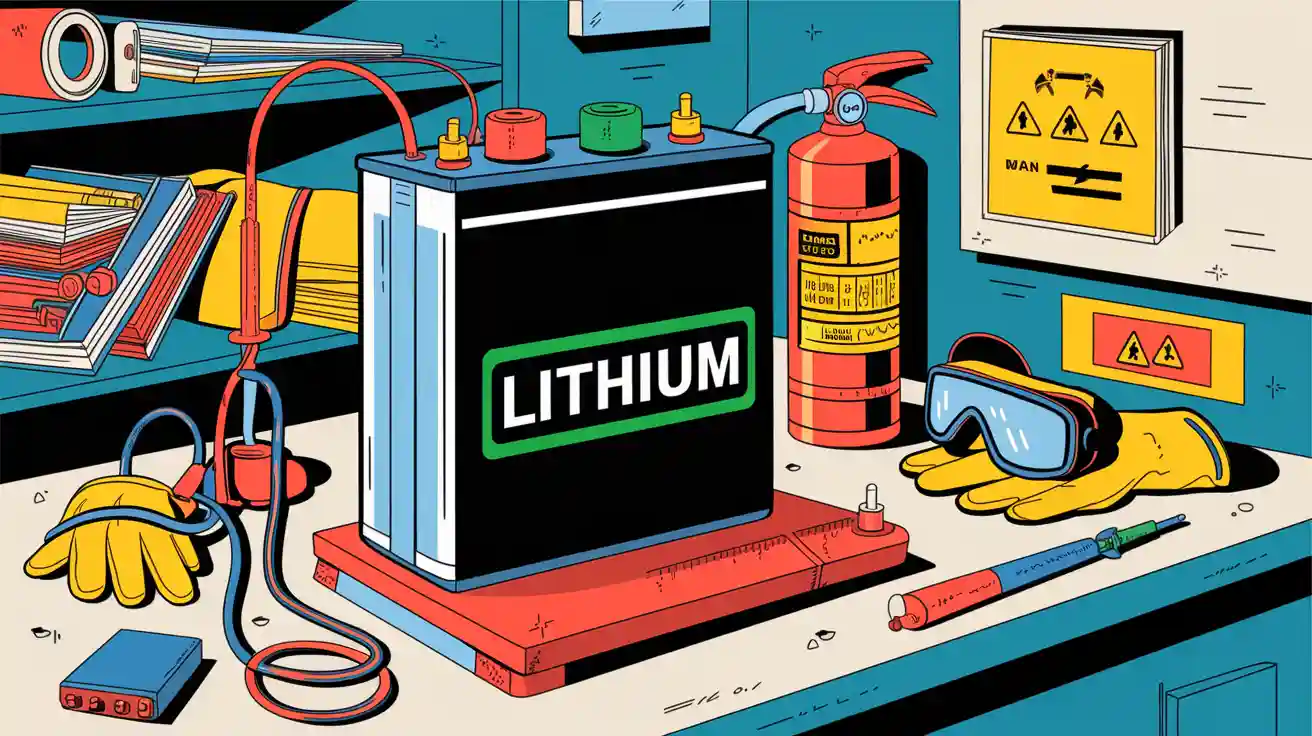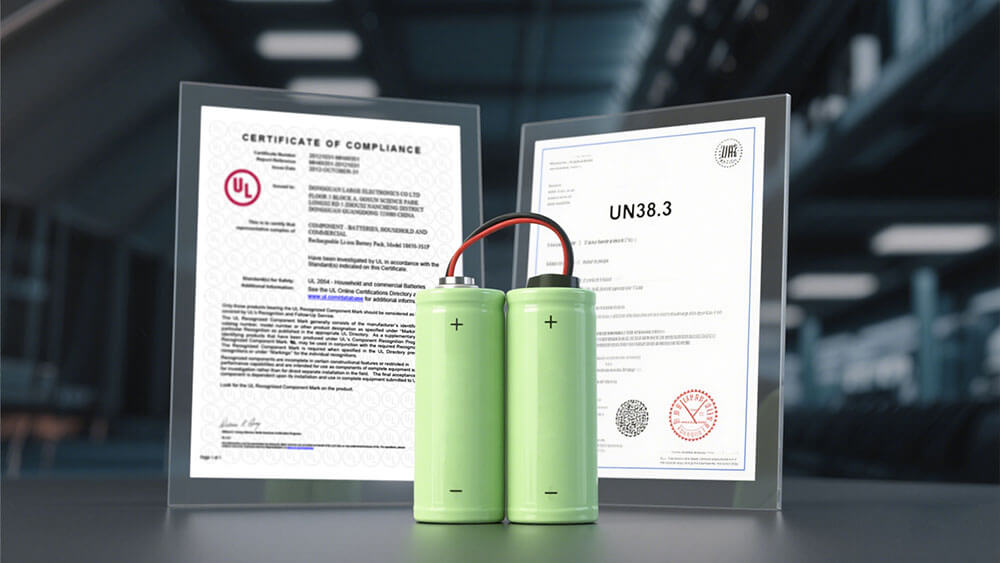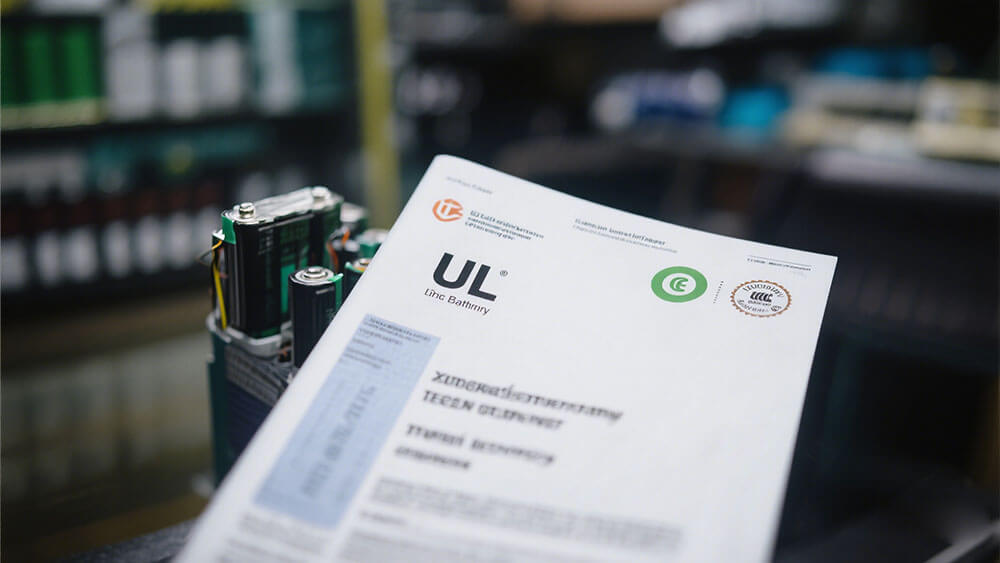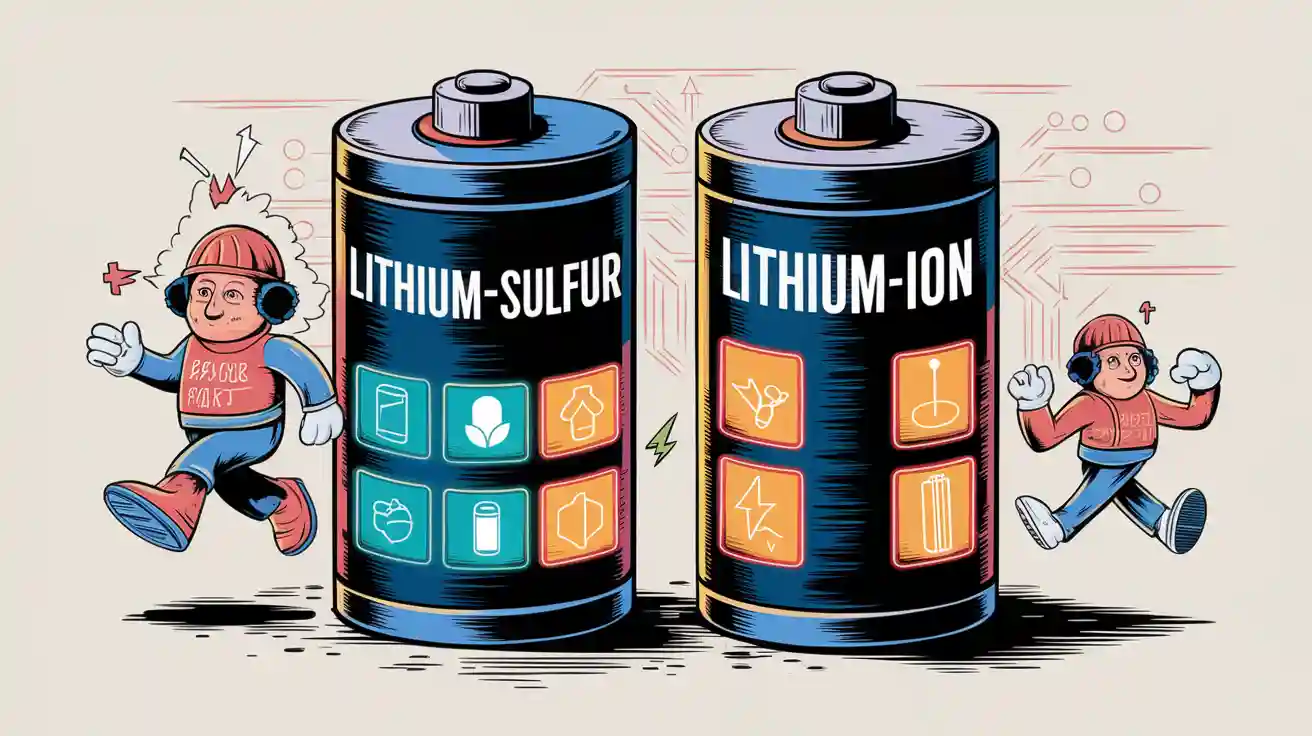Contents

Safety performance tests about Lithium batteries are crucial in ensuring the delivery of reliable and risk-free products. As industries such as automotive and consumer electronics continue to rely on advanced battery systems, the global market is anticipated to grow to $27 billion by 2028. Conducting rigorous safety performance tests about Lithium batteries not only ensures compliance with industry standards but also mitigates potential risks and aligns with sustainability initiatives for a greener future.
Key Takeaways
Testing lithium batteries is important to make sure they work well and meet rules.
Getting certifications like UN38.3 and UL helps sell products and shows care for safety and the planet.
Careful testing lowers chances of fires, explosions, or harm to nature, keeping people and the Earth safe.

Part 1: Overview of Key Battery Certifications and Standards
1.1 UN38.3: Ensuring Safe Transportation of Lithium Batteries
UN38.3 certification plays a pivotal role in the safe transportation of lithium-ion batteries. This certification ensures that batteries meet stringent safety standards during air, sea, and land transport. Regulatory changes, prompted by incidents like the Asiana Airlines 747 crash in 2011, have made UN38.3 testing mandatory. These tests include altitude simulation, thermal cycling, vibration, and impact assessments. By adhering to these guidelines, you can minimize risks such as short circuits and thermal runaway, which are common causes of transport-related hazards.
Tip: Proper packaging and compliance with UN38.3 testing can significantly reduce the likelihood of accidents during transit.
1.2 UL Standards: Safety for Consumer and Industrial Applications
UL standards, such as UL2054, focus on the safety of lithium-ion battery packs used in consumer electronics and industrial applications. These certifications evaluate batteries for overcharging, short-circuiting, and thermal runaway risks. UL-certified batteries demonstrate reliability and compliance with global safety certification requirements.
Certification | Description | Validity Period |
|---|---|---|
UL2054 | Safety standard for household and commercial batteries. | 1 year |
By obtaining UL certification, you enhance your product’s marketability and ensure adherence to regulations governing lithium-ion battery certification.
1.3 CB Standards: Global Compliance for Lithium-Ion Battery Safety
CB certification facilitates the mutual recognition of safety certifications across international markets. This standard ensures that lithium-ion batteries meet global safety benchmarks, reducing the need for multiple certifications. Statistics reveal that over 60% of procurement policies now require dual certifications, with this figure projected to reach 78% by 2025. Adopting CB standards can streamline your product’s entry into diverse markets while boosting customer confidence.
1.4 CE Standards: Consumer Applications and Comply with Environmental Protection
CE certification ensures that lithium-ion batteries comply with EU safety, health, and environmental protection guidelines. This certification is particularly relevant for consumer electronics, where compliance with environmental regulations is critical. CE-certified batteries undergo rigorous testing to meet EU directives, including assessments for hazardous substances under RoHS guidelines.
Certification | Description | Validity Period |
|---|---|---|
CE | Assures compliance with EU safety, health, and environmental protection guidelines. | 5 years |
RoHS | Ensures batteries are free from hazardous substances. | N/A |
By aligning with CE certification, you demonstrate a commitment to sustainability and regulatory compliance, enhancing your brand’s reputation in the global market.

Part 2: Step-by-Step Safety Performance Test About Lithium Battery
2.1 Mechanical Testing: Shock, Vibration, and Impact Resistance
Mechanical testing ensures that lithium-ion batteries can withstand physical stresses encountered during transportation and usage. These tests simulate real-world conditions to evaluate the battery’s structural integrity and safety.
Test Type | Description |
|---|---|
High-altitude simulation | Simulates conditions at high altitudes to assess battery performance under reduced pressure. |
Thermal cycling | Subjecting batteries to extreme temperature variations to evaluate thermal stability and robustness. |
Vibration testing | Nine hours of vibration testing to assess the battery’s ability to withstand mechanical stress. |
Mechanical shock | Eighteen high-energy mechanical shocks to evaluate the battery’s resilience to sudden impacts. |
Crush/impact testing | Tests the battery’s mechanical robustness against external compression forces that may cause failure. |
Short-circuit test | Evaluates the functionality of safety circuits after exposure to mechanical stress. |
Voltage and mass loss checks | Monitors for internal shorting and venting events after mechanical stress exposures. |
Mechanical testing is critical for applications in industries like consumer electronics and industrial, where batteries face frequent handling and potential impacts. By conducting these tests, you can ensure that your batteries meet safety performance standards and maintain reliability under challenging conditions.
Tip: Incorporating robust mechanical testing in your battery development process reduces the risk of failures during transportation and usage.
2.2 Thermal Testing: High and Low Temperature Tolerance
Thermal testing evaluates how lithium-ion batteries perform under extreme temperature conditions. This testing process is essential for identifying risks like thermal runaway, which can lead to catastrophic failures.
Differential Scanning Calorimetry (DSC) and Modulated Differential Scanning Calorimetry (MDSC) are widely used to assess the thermal performance of battery electrolytes. DSC measures heat flow changes during phase transitions, while MDSC provides detailed insights into heat capacity and kinetic processes. These methods are particularly effective for understanding battery behavior at low temperatures.
For high-temperature tolerance, Fractional Thermal Runaway Calorimetry (FTRC) is a key method. Conducting multiple FTRC measurements helps predict heat output variability, ensuring accurate safety evaluations. This approach, combined with Accelerating Rate Calorimetry (ARC), creates quantitative safety maps for lithium-ion batteries, enhancing their design and safety.
Thermal testing is especially important for applications in Medical and Robotics, where batteries must operate reliably in diverse environments.
Note: Conducting comprehensive thermal testing minimizes the risk of thermal runaway, ensuring the safety and longevity of your battery systems.
2.3 Electrical Testing: Overcharge, Short Circuit, and Discharge Safety
Electrical testing focuses on evaluating the battery’s response to electrical stresses, such as overcharging, short circuits, and forced discharges. These tests ensure that lithium-ion batteries can handle electrical anomalies without compromising safety.
Test Type | Safety Requirements |
|---|---|
External Short Circuit Test | The battery must not ignite or rupture when subjected to external short circuits. |
Overcharge Test | The battery must not ignite or rupture when subjected to extended charging. |
Forced Discharge Test | The battery must not ignite or rupture when subjected to reverse polarity charging. |
Electrical testing is crucial for preventing thermal runaway caused by electrical faults. For instance, overcharging can lead to excessive heat generation, while short circuits may cause internal damage. By addressing these risks, you can enhance the safety performance of your lithium-ion batteries.
Tip: Implementing advanced Battery Management Systems can further improve electrical safety by monitoring and controlling charging and discharging processes.
2.4 Environmental Testing: Humidity, Altitude, and Corrosion Resistance
Environmental testing assesses how lithium-ion batteries perform under varying environmental conditions, such as humidity, altitude, and exposure to corrosive elements. These tests simulate extreme scenarios to ensure battery reliability in diverse applications.
Humidity Testing: Measures Relative Humidity (RH) from 20% to 98% to evaluate the battery’s resistance to moisture.
Altitude Testing: Simulates altitudes up to 100,000 feet to assess performance under reduced pressure.
Corrosion Resistance: Tests the battery’s ability to withstand exposure to corrosive environments, ensuring long-term durability.
Advanced facilities, such as walk-in chambers, simulate altitudes up to 150,000 feet and comply with international standards like DO160 and MIL-STD-810. These tests are vital for batteries used in infrastructure and security systems, where environmental conditions can vary significantly.
Note: Environmental testing ensures that your batteries remain functional and safe, even in the harshest conditions.

Part 3: Importance of Lithium-Ion Battery Safety Testing
3.1 Enhancing Product Safety and Reliability
Lithium-ion battery safety testing plays a pivotal role in ensuring the safety and reliability of battery systems. Rigorous testing identifies potential safety risks, such as thermal runaway, short circuits, and overcharging, which can compromise the performance of lithium-ion batteries. By addressing these risks during the development phase, you can deliver products that meet the highest safety standards.
For instance, mechanical and thermal testing ensures that batteries can withstand extreme conditions, such as high-impact forces or temperature fluctuations. This is particularly critical for industries like infrastructure and security systems, where operational reliability is non-negotiable.
Tip: Incorporating advanced safety measures, such as Battery Management Systems, can further enhance the safety and reliability of your lithium-ion battery systems.
3.2 Ensuring Compliance with Battery Certifications
Compliance with regulations and certifications is essential for market acceptance and operational safety. Lithium-ion battery safety testing ensures adherence to global standards, such as UN38.3, UL, and CE, which are critical for transportation, consumer electronics, and industrial applications.
Evidence Type | Description |
|---|---|
UN 38.3 Compliance | Ensures batteries are safe for transport, reducing incidents and enhancing market reach. |
Product Safety | Guarantees consumers receive tested batteries, minimizing malfunctions and accidents. |
MSDS Implementation | Provides safety information for proper handling, reducing workplace accidents and health hazards. |
Informed Decisions | MSDSs enable consumers to make safe use and disposal choices, enhancing overall safety. |
By meeting these requirements, you can expand your market reach and build trust with stakeholders. For example, UN38.3 compliance minimizes transportation risks, while CE certification demonstrates a commitment to environmental protection. These certifications not only ensure safety but also enhance your brand’s reputation in the global market.
Note: The importance of compliance extends beyond regulatory adherence. It reflects your commitment to delivering safe and reliable products to your customers.
3.3 Reducing Risks of Fire, Explosion, and Environmental Damage
Safety testing significantly reduces the risks associated with lithium-ion batteries, such as fire, explosion, and environmental damage. Comparative studies highlight the role of enhanced safety testing in optimizing battery performance across industries:
Mn-based lithium-ion batteries (MnRB) have a triggering temperature 0.8% lower than NCM523 and 12.7% lower than LiFePO4 batteries.
The normalized gas emission during thermal runaway for MnRB is 1.3% lower than NCM523.
The lower explosion limit of MnRB is 2.7% lower than NCM523 and 44.0% higher than LiFePO4.
EV-ARC adiabatic tests and side heating tests assess thermal stability and explosion characteristics.
These findings underscore the importance of rigorous safety testing in mitigating risks and enhancing the thermal stability of lithium-ion batteries. Industries like Medical and Robotics rely on batteries that can operate safely under diverse conditions.
Callout: Prioritizing risk prevention through comprehensive safety testing not only protects end-users but also aligns with sustainability goals.
Lithium battery safety testing ensures reliability and minimizes risks across industries. Adhering to standards like UN38.3, UL, and IEC enhances product safety and supports global compliance.
Prioritize safety testing to protect your products and reputation. Explore customized battery solutions with Large Power to meet your unique needs.
FAQ
1. How does lithium-ion battery safety testing benefit your business?
Safety testing ensures compliance with global standards, enhances product reliability, and minimizes risks like thermal runaway, boosting customer trust and marketability.
2. What industries require rigorous lithium-ion battery testing?
Industries like Medical, Robotics, and Infrastructure rely on safety testing for operational reliability.
3. How can Large Power assist with custom battery solutions?
Large Power offers tailored battery solutions to meet your specific safety, performance, and compliance needs.





